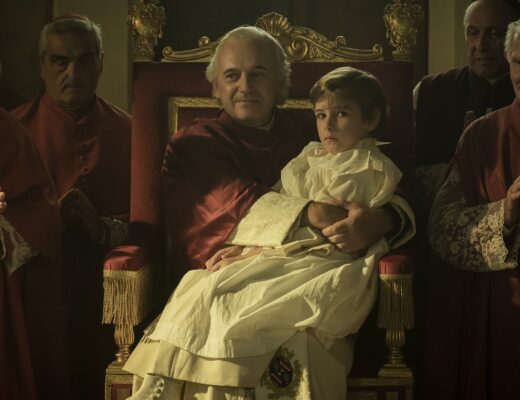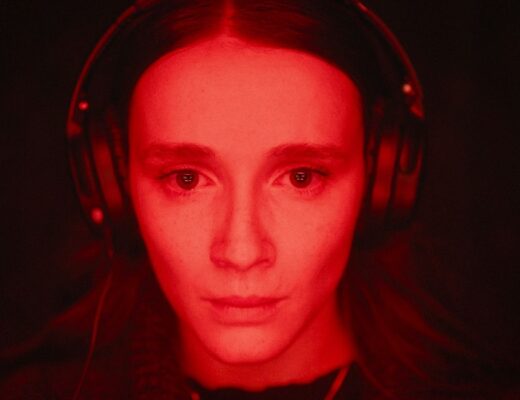Something incredible is brewing in the Sakha Republic (Yakutia). Over the last twenty years, this large yet sparsely-populated territory situated in the far-flung and frosty reaches of Eastern Russia has been slowly but surely building a robust regional cinema separate from the Russian film industry writ large. Sakha films — which range from melodrama to horror to recognizable arthouse, and usually feature the indigenous Sakha language (Yakut) rather than Russian — sometimes even outperform Hollywood blockbusters in Yakutsk, the region’s urban center. Over the last decade, these small-budget films shot by self-taught directors aiming to capture the life and traditions in the land of permafrost, have started to make their presence felt not just locally, but at Russian film festivals and on the international stage as well. Dmitrii Davydov’s Scarecrow is a fantastic encapsulation of the type of talent that this thriving film scene is nourishing, and suggests that the possibilities of this burgeoning film center, affectionately and colloquially known as “Sakhawood,” are as vast as the Siberian landscape that surrounds it.
Despite its ominous poster and unnerving nature, Scarecrow shouldn’t be categorized as a horror film; its central parable of a healer shunned and scapegoated by her village neighbors fits more neatly within the bounds of magical realism. Better yet, its convergence of haunting inner turmoil and themes of faith and sacrifice calls to mind the aching cinema of Carl Th. Dreyer, with his withering depiction of witch trials in Day of Wrath springing first to mind. And in casting folk singer Valentina Romanova-Chyskyyray as said healer, Davydov has found a lead whose stark performance here rises to the shattering intensity of Dreyer’s unforgettable heroines. In an unsettling prelude of what’s to come, the opening shot shows her standing still in a blinding field of snow, arms out and rigid like a scarecrow (a nickname the villagers taunt her with), her breaths harried and sharp, repeating in a chilling mechanical rhythm.
The next scene shifts into night, and following a police patrol matter-of-factly escorting the healer to their station, we learn her presence is intended as a last-chance attempt at saving a dying gunshot victim. Davydov shoots in a shaky handheld that bobs and weaves with the action, while the soundtrack details the cadence of boots crunching and squeaking their way through the snow, peppered with the officer’s heavy breaths, and transitioning viewers into the bracing realism that marks the film. It’s here, at the station, that we get the clearest glimpse at the mystical act of healing which will be hidden from us in the later sections. She undresses and climbs on top of the victim, her face pressed to the bleeding open wound. The desaturated color palette looks jaundiced, and meaningfully marries the surrounding squalor to an act that approaches the divine.
Scarecrow follows a pattern moving forward, as villagers who are vicious to her in public, out of either superstitious fear or skepticism, proceed to make visits in private for treatment of their maladies. After each session, her body rebels, she vomits bile and covers up her pain with drink, a bottle of vodka perpetually in her clutch. Romanova-Chyskyyray is arresting in her commitment to the performance; not only does she push her body into contortions, all flailing limbs and fugue state groans, but she hammers at a piercing sadness as well. In one of the strongest scenes in the film, she sits in a boiler room with a man who seems to be her confidant and likely lover. After he shovels coal into a roaring furnace and returns to sit by her side on his small bed, she collapses into weeping, and the two exchange words we cannot hear, her face lost in anguish, his in somber sympathy. (Is this perhaps a tip to Dreyer, whose best-known shot is Falconetti’s silent tears in The Passion of Joan Of Arc?)
As we gradually learn more about her past, her pain intensifies, and as the film moves toward its final gesture (captured like so much that precedes it in a neatly-crafted composition), a larger theme reveals itself. Davydov draws on the shamanistic traditions of the indigenous Sakha people to inform the substance of his parable, but the throughline of the “scapegoat” touches on the rawness of current events. Like so much of the world, right-wing nationalism and anti-immigrant violence have bubbled over in Yakutsk as well. In 2019, a violent nationalist mob launched an attack on a street market run by Kyrgyz migrants, demanding the expulsion of Kyrgyz and other Central Asian peoples. Within this context, Scarecrow forms an emphatic portrait of a timeless story, a person denied by their community despite their gifts and sacrifices, and the desperate conditions that foster this rejection. Watching the culminating miracle of the film, one can’t help but think about the real-life miracle of its journey to Rotterdam. Davydov, a primary school teacher with little formal training, has now directed his third feature film, a work of such resonant power, nuance, and craft that it’s made its way into one of the most esteemed international festivals. It’s easy to watch lumbering Hollywood monopolies form into ouroboros content mills and consider cinema dead; it’s much harder to do so with your eye on the Sakha Republic and a myriad of comparable film movements thriving worldwide.
Published as part of IFFR 2021 June Programme — Dispatch 2.







